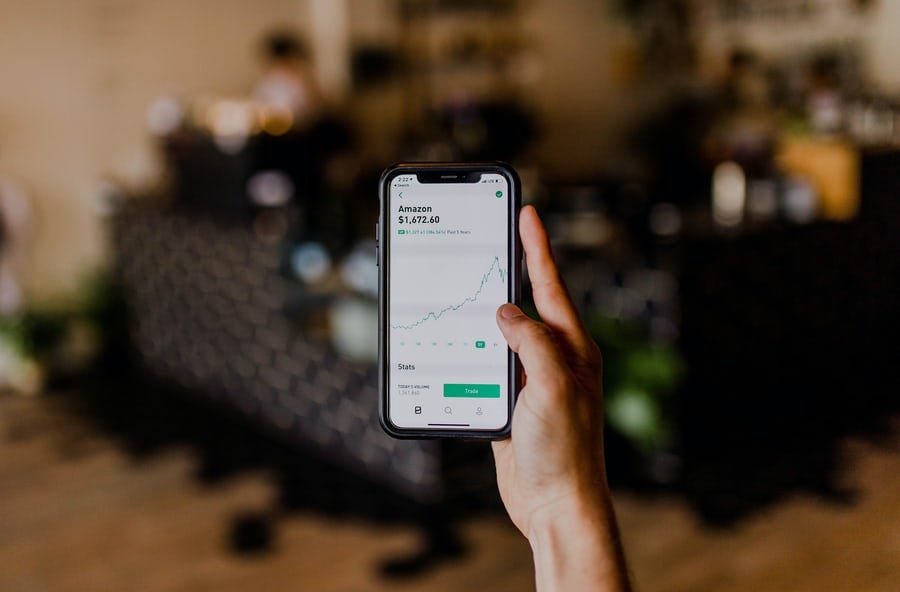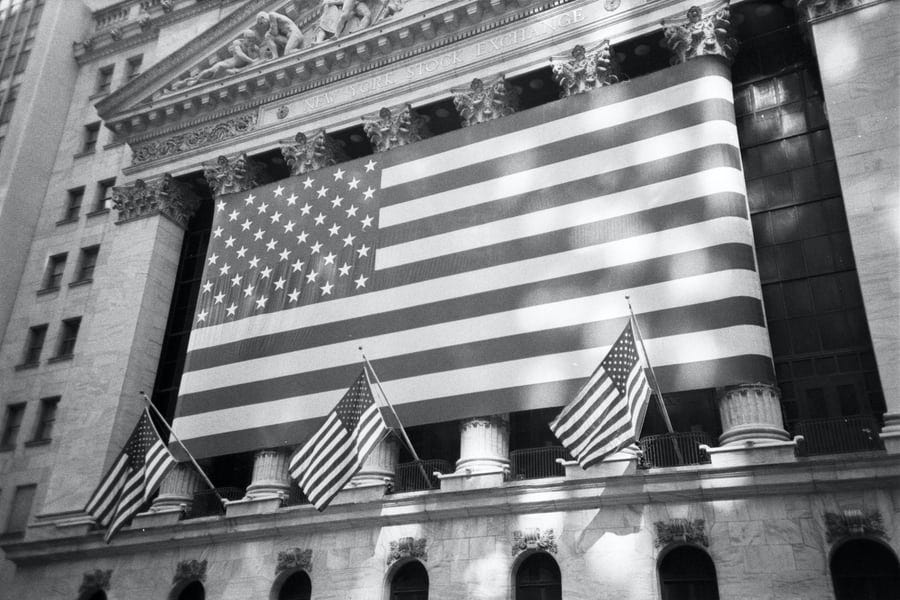Despite the pandemic’s toll on the economy, the S&P 500 index is up nearly 15% for the year and the market is nearing levels last seen in 2000, the year the dot-com bubble began to burst. If there is anything to learn throughout history, it’s that history repeats itself, even though we’ve never seen a pandemic quite like this in modern history.
This pandemic has brought grim milestones that have put millions out of work, closed business across the country, lead to skyrocketing mental illness visits, new spending and savings habits, a new focus on preparation, and a grim unimaginable reality the US has only surpassed: 1 out of every thousandth American dies every 36 seconds. Yet despite this chaos, the market seems to be way past this turmoil, into the distant future boosting returns for those who realistically probably don’t need it as much as the majority of Americans do waiting on miles-long food bank lines and on the brink of eviction.
The stock market trades in futures 3–7 months down the road, never in the present so it is already hard to gauge what it has been up to past the March recession as investors have been bullish for much of 2020 as the Federal Reserve continues to pump some $120 billion into financial markets by purchasing Treasury bonds and government-backed packages of mortgages keeping markets stable and interest rates low, what the rich and only half of U.S. households who own stock can only take advantage of from these gains.
This strategy has been used during tough historic periods when America needs help. It is called “quantitative easing”, similar to the programs put in place by the Fed during the 2008 financial crisis when it bought bonds to inject money into the economy as the most efficient way to boost economic expansion.

Here to Stay?
Despite slips here and there through intraday volatility in the markets which I never recommend as a short-term approach strategy, the S&P 500, Dow Jones Industrial Average, and Nasdaq are just shy of record highs but how long can this last? As we look back in history from the dot-com bust that began in 2000 which vaporized about 40% of the market’s value and crushed consumer confidence that lead the country into a recession in early 2001. So is it expected in 2021? How can we guarantee history won’t repeat itself, again and again?
The only thing that is certain is uncertainty and no matter how much experience you have, since this is unlike any housing crisis, technology boom, or gold rush, we better keep our hopes up that this rally is here to stay.
As a student officially on a 6-week hiatus on winter break keeping up with the trends, speculation, and predictions discussing with my advisor and family, here are a few reasons why I’m confident that these gains are here to stay and have held up better than any other time in history:
-The Electoral College voted on Dec 14th to formalize the victory of President-Elect Joe Biden bringing an end to lawsuits and a contested election markets were warry about
-Nationwide vaccine rollout-signaling the light at the end of the tunnel everyone so desperately talks about
-Bitcoin reached 27k leading to a frenzy in electronic trading and electronic currency helping boost returns for the indexes
-IPO market-$165 billion raised this year with small but fast-growing some non-profitable companies leading the Dow Jones to inch higher to a possible 35k mark by the end of this year
-Tesla joined S&P 500 signaling a possible bubble with analysts worried the stock is overvalued as shares have risen over 800% this year and trading at levels beyond its intrinsic value. It is up 691% percent this year giving it the largest market value of more than $600 billion, larger than any company in the S&P 500. Too good to be true?
-WFH to stay? Tech-heavy/monopolistic companies that we rely on such as cloud computing software maker Snowflake, online surveillance company Palantir and online market place, Etsy which is up 330% this year helping us get through work at home
-Fed’s announcement to keep interest rates at rock bottom and continue to buy government-backed bonds for the foreseeable future
-Relief of the $600 checks made out to Americans that President Trump signed last night, disregarding the fact that unemployment benefits ran out a day before. At least $600 is better than nothing. Finally…
-Small investor pitch-in-Trading stocks were a huge hit as we were bunkered up at home wanting to learn financial literacy. Retail investing apps such s Robin Hood had over 3 million new users this summer as sports gambling and casinos shut down even though there isn’t’ much difference to these trading apps as the SEC investigates

Back to the Future, Again?
So overall for our country and bank accounts, there are more pluses than minuses going into the New Year. The best recommendation I can make for you all eager learners is to always let your money just sit. Of course, not all in cash, but in the market! It never hurts and letting it ride the waves will always balance out in the long term. I know it can be extremely tempting to want to play with it and make speculative options and hedges, but in actuality, that will hurt you more than heal you. It takes a lot of guessing, predictions, luck, energy and time that in the long run, isn’t worth the hype.
If you can, I would strongly recommend taking advantage of the record low-interest rates once we get back to normal, as they have to eventually shoot back up with inflation, as how the dot-com bubble seemingly happened with too much overconfidence in Internet-related companies with the expansion of the internet. Since the world has already lived with the adoption of the internet and the only things that are close to the overvalued 2000’s tech companies are the massive IPO market and tech frenzies of 2020, with interest rates at historic lows and stimulus bound, I have more than high hopes and so there is no need to fear about a boom or bust. Especially as an individual investor if you have a diversified portfolio, emergency savings account, prepare for the worst, hope for the best and save more than you earn, something Amazon who raised a ton of money before the market crash, had a cushion to survive, you will be all set in any circumstance.

Fanny Packs And BlackBerrys Are Back?
So what happens from here? Whenever there is a peak there must be a trough, that’s just how life, the hedonic treadmill with our spending habits and happiness works!
Anticipation doesn’t sustain itself forever or does it? Well, according to the market it in fact does! Over the past century, the S&P 500 historically has always gone up and recorded record highs. Yes, if you are a fanatic day trader examining, trying to time the market and obsessed with checking your gains and losses in your portfolio each and every day, you will see less steady momentum and more losses because individual stocks do that. You always remember your losses more than your gains. If you own a bundle of stocks that are a part of an index or mutual fund, if 1 company out of the 500 in that portfolio went bust, you have 499 to level it out and won’t see any effect. Keep that fanny pack on and follow history diligently and with patience. Nothing new here.

So When Is Too Much, Too High?
Too much of anything is not a good thing, especially when it comes to a stock market rally because then we aren’t trading based on rationalization, and instead more on sentiment, fear, and unrealistic expectation of Tesla. According to the NY Times, “Extreme levels of investor optimism are typically viewed as a warning sign that the market could be vulnerable to a sudden drop because it means there are fewer and fewer investors on the sidelines who could join in and push stocks still higher. The dot-com bubble burst after steady interest rate increases by the Fed dampened economic growth” something we haven’t encountered nor see in post-pandemic future as interest rates are at historic lows. This means rental prices will increase with more demand and mortgage borrowings are up, so take advantage of it while it lasts! But it is hard to tell the bottom half of Americans not invested nor have any financial literacy to take advantage of these opportunities because as in any crisis, it is made for the rich. There will always be strugglers and the rich will still pay fewer taxes than the poor and take advantage of those stimulus checks, that’s just the way it is. But how can we make it a more just and equal society when it comes to lessening the wealth gap? Well, it all starts with investing in yourself through education, the best asset of all time. The market will go higher if there are more investors betting on stocks and contributing money towards their retirement and college funds, hence everyone will get a piece of the pie. So what are you waiting for?! There is nothing to lose, only to gain through passive income.

Rest Assured
Overconfidence is surely expected as stocks are continued to climb and there will always be others, cough cough Crox and Shutterfly that will lag depending on where WFH is headed, e-commerce loungewear trends, and the state of interest rates post-pandemic. Yet as the economy continues to recover, consumer spending through e-commerce is at an all-time high, and with no changes from the Fed policy anytime soon, this is surely a bizarre moment in time but doesn’t have to be if you keep your emotions at bay, what all long term investors do. There is nothing more to be said because we could be speculating about the future till the future. All you now know is how a bubble happened in the past and why this time around is different.
Readers, how do you feel about your portfolio in the coming year? Are you more cautious, risk-averse, or optimistic that we will get through this turmoil successfully with a nice steady rebound with no burst insight?

